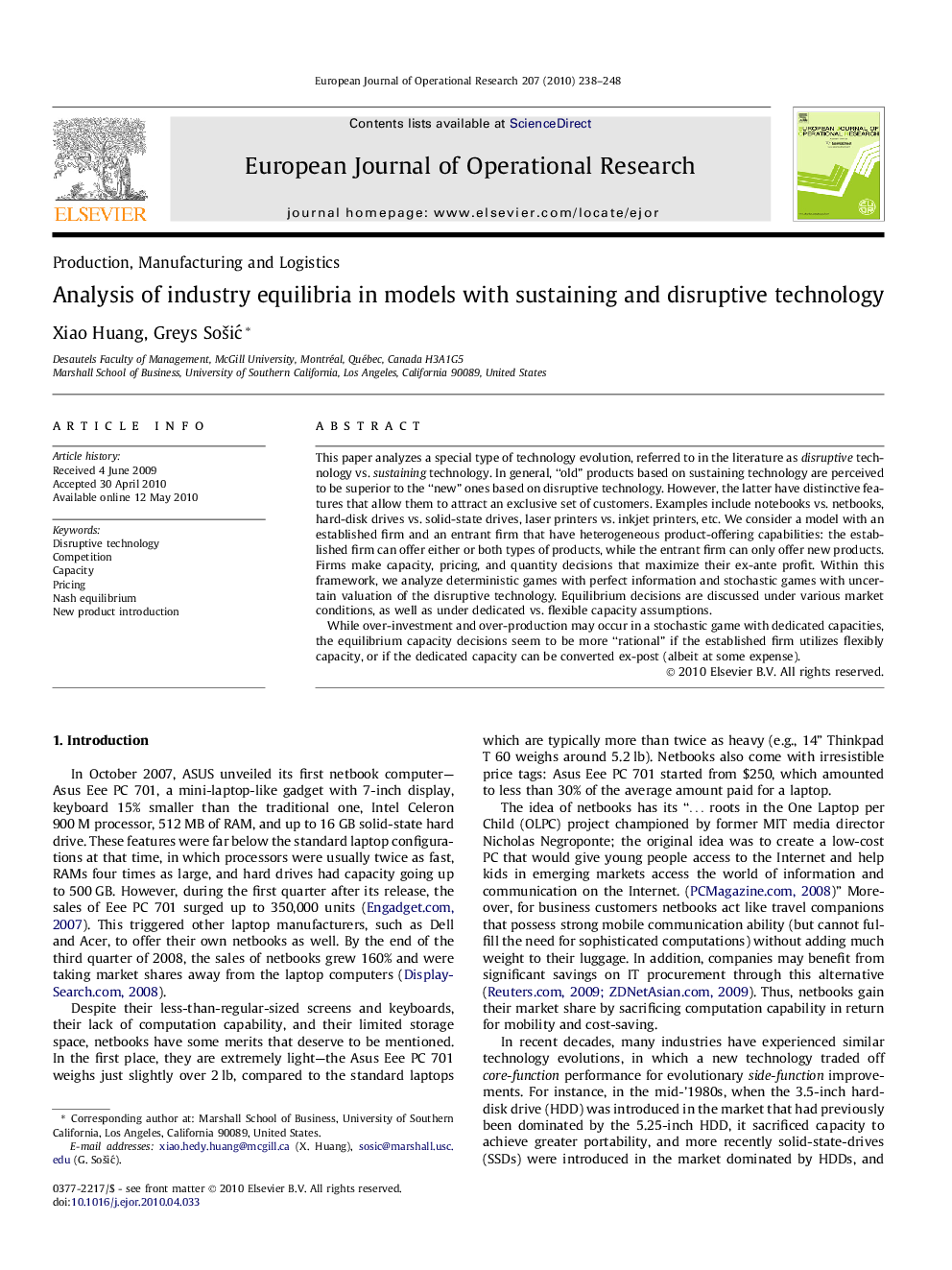| Article ID | Journal | Published Year | Pages | File Type |
|---|---|---|---|---|
| 481082 | European Journal of Operational Research | 2010 | 11 Pages |
This paper analyzes a special type of technology evolution, referred to in the literature as disruptive technology vs. sustaining technology. In general, “old” products based on sustaining technology are perceived to be superior to the “new” ones based on disruptive technology. However, the latter have distinctive features that allow them to attract an exclusive set of customers. Examples include notebooks vs. netbooks, hard-disk drives vs. solid-state drives, laser printers vs. inkjet printers, etc. We consider a model with an established firm and an entrant firm that have heterogeneous product-offering capabilities: the established firm can offer either or both types of products, while the entrant firm can only offer new products. Firms make capacity, pricing, and quantity decisions that maximize their ex-ante profit. Within this framework, we analyze deterministic games with perfect information and stochastic games with uncertain valuation of the disruptive technology. Equilibrium decisions are discussed under various market conditions, as well as under dedicated vs. flexible capacity assumptions.While over-investment and over-production may occur in a stochastic game with dedicated capacities, the equilibrium capacity decisions seem to be more “rational” if the established firm utilizes flexibly capacity, or if the dedicated capacity can be converted ex-post (albeit at some expense).
